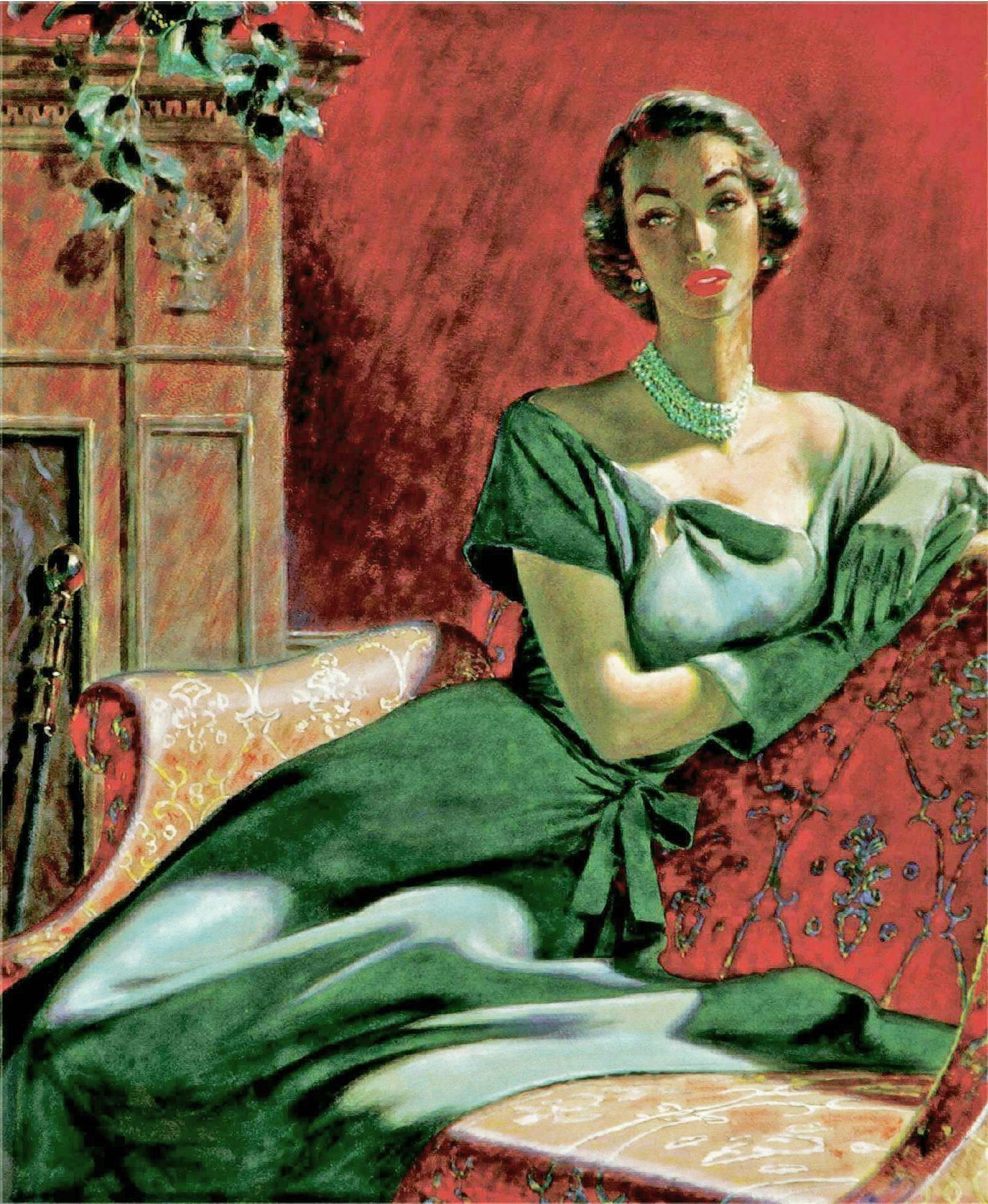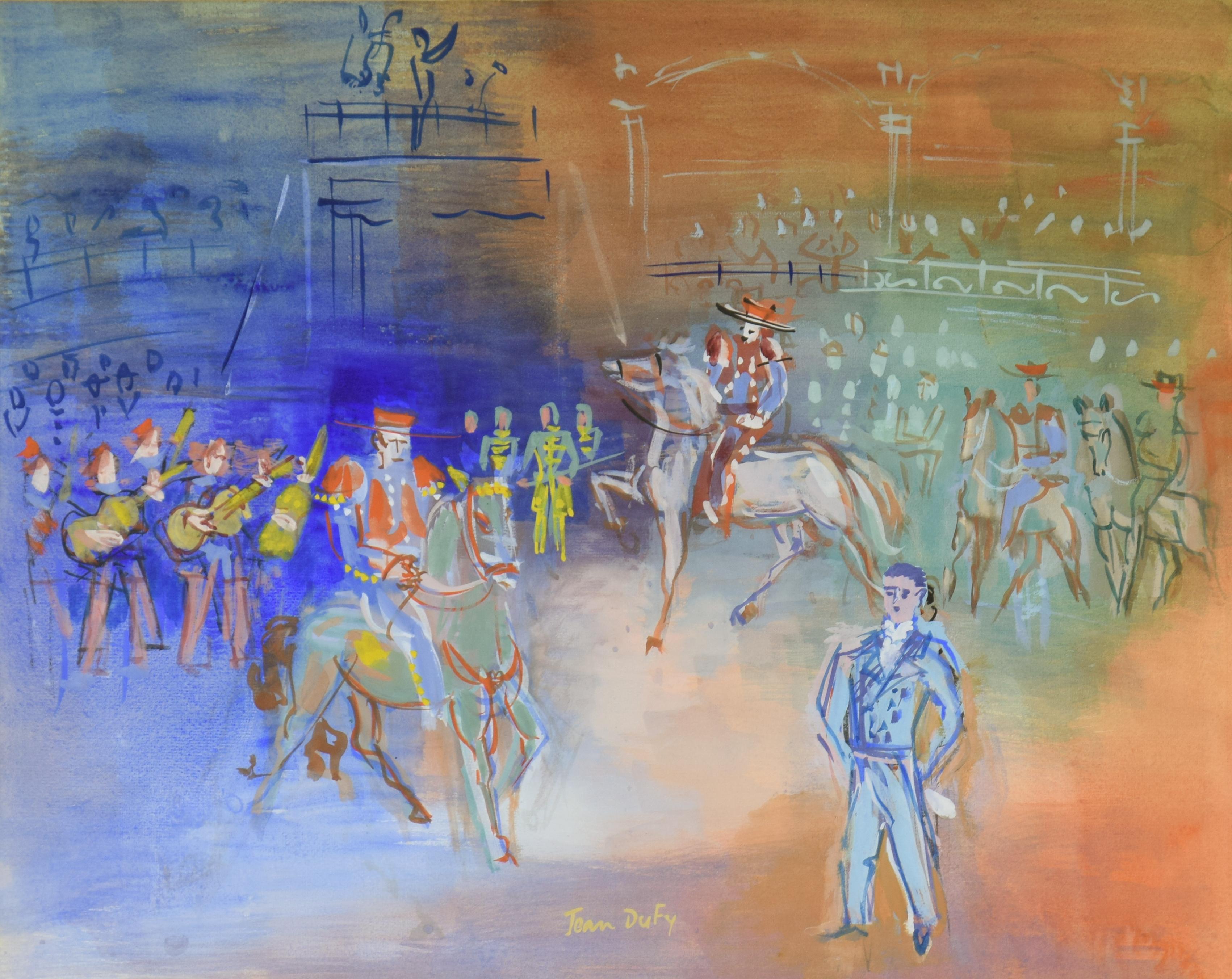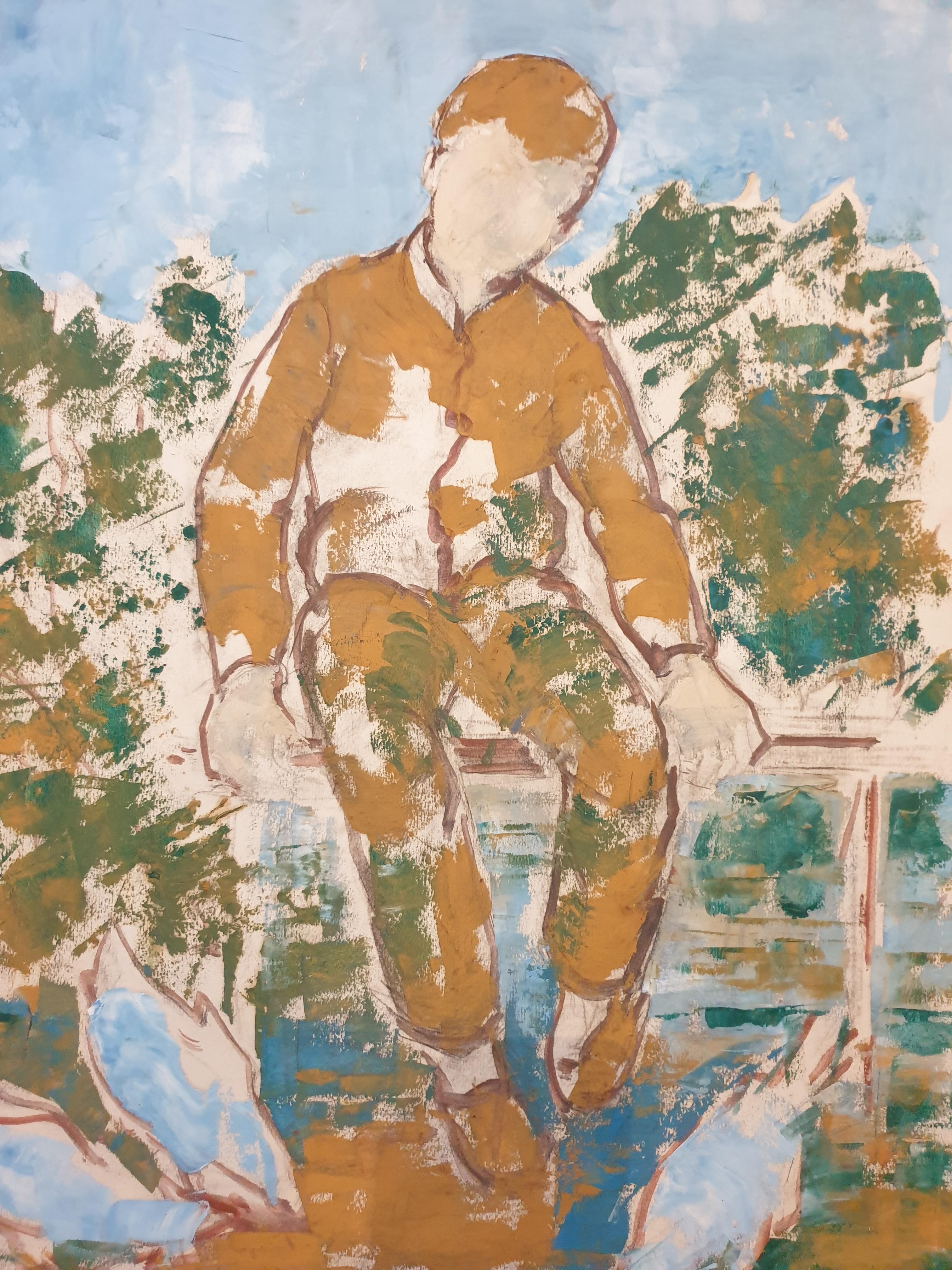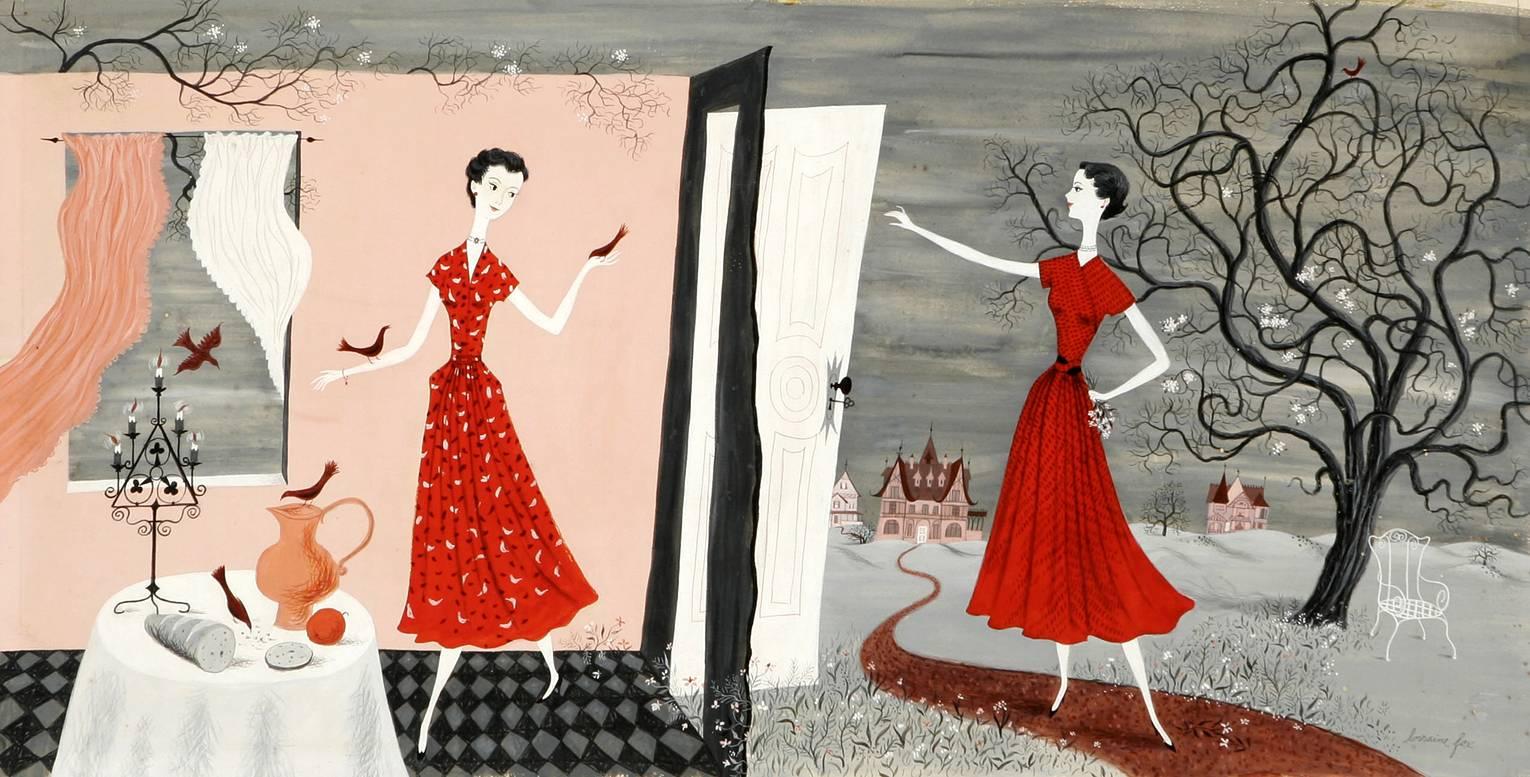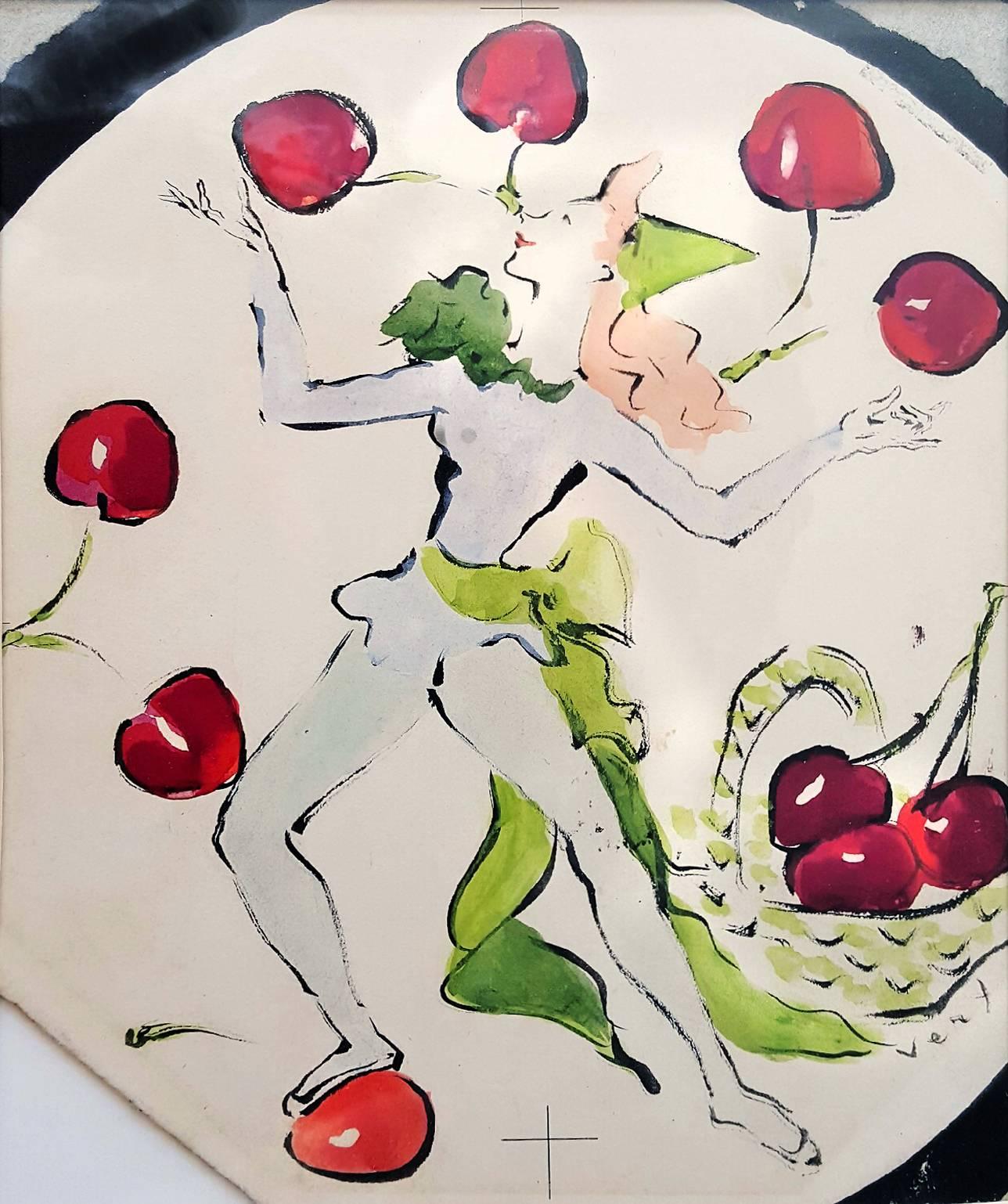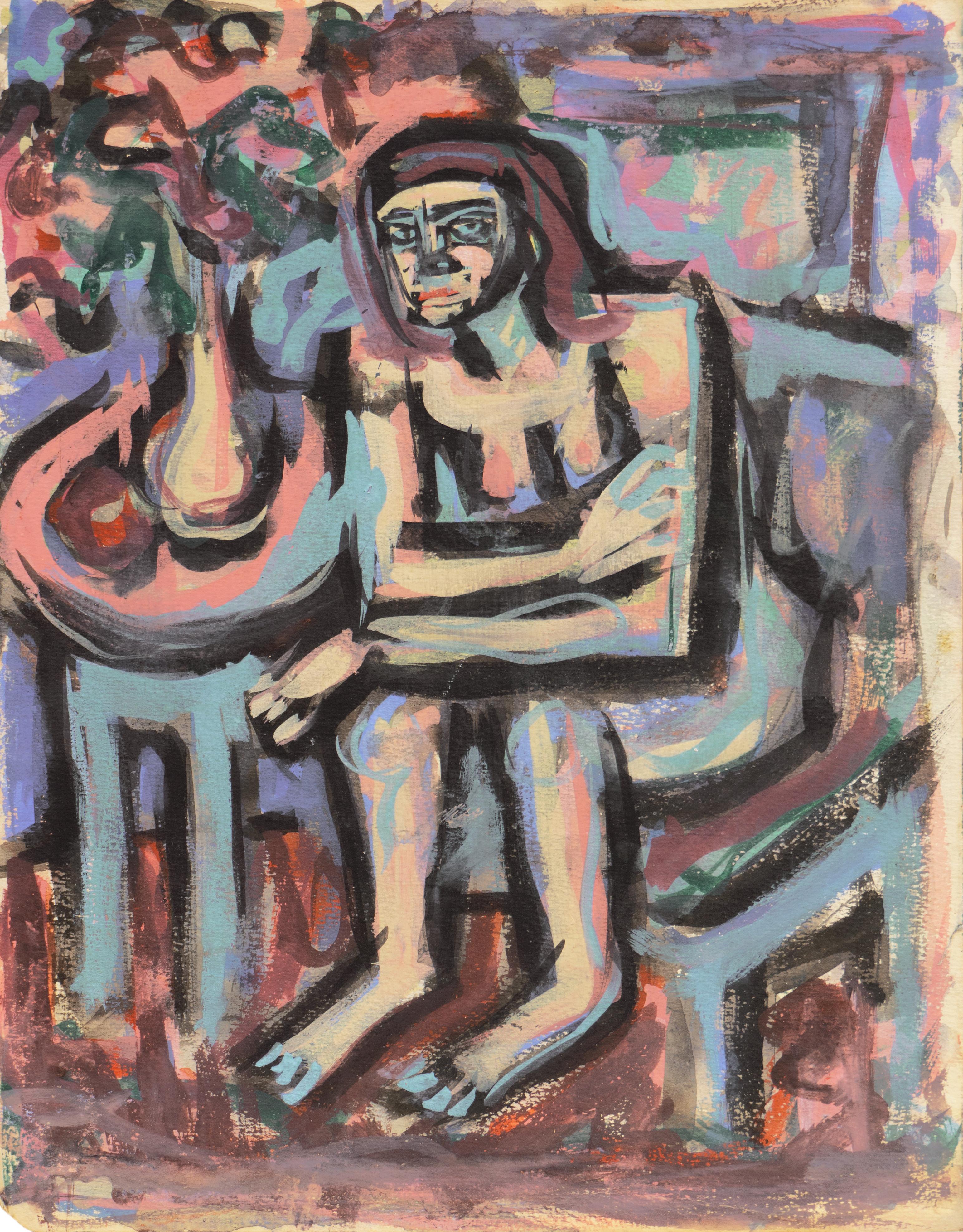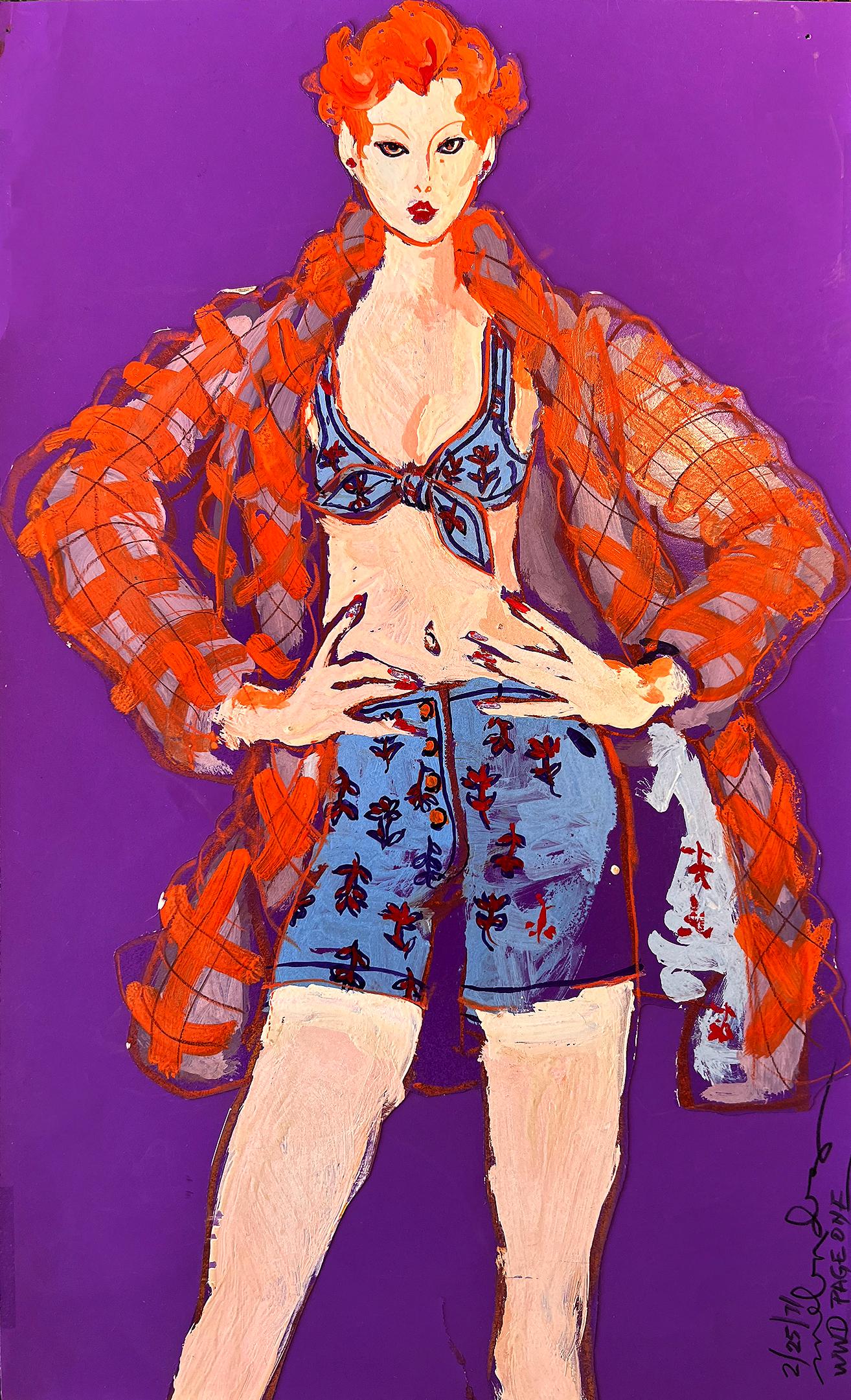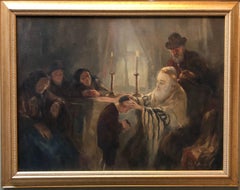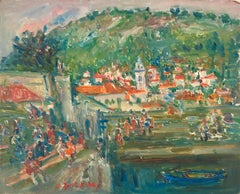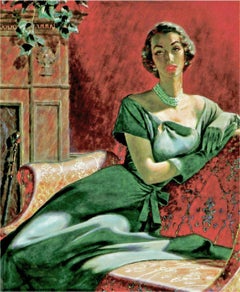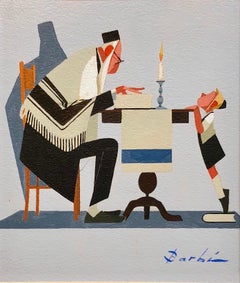
Vintage Jewish French Caricature Cheder Test Humorous Judaica Gouache Painting
View Similar Items
Want more images or videos?
Request additional images or videos from the seller
1 of 9
UnknownVintage Jewish French Caricature Cheder Test Humorous Judaica Gouache Painting
About the Item
- Dimensions:Height: 15 in (38.1 cm)Width: 12 in (30.48 cm)
- Medium:
- Movement & Style:
- Period:
- Condition:minor wear to frame.
- Gallery Location:Surfside, FL
- Reference Number:1stDibs: LU3823043843
About the Seller
4.9
Platinum Seller
These expertly vetted sellers are 1stDibs' most experienced sellers and are rated highest by our customers.
Established in 1995
1stDibs seller since 2014
1,556 sales on 1stDibs
Typical response time: 1 hour
More From This SellerView All
- Wisdom of King Solomon Rare Biblical Hungarian Judaica Oil PaintingBy Anton PeczelyLocated in Surfside, FLRare Pre World War II (Pre Holocaust) Judaica Art. European Judaic art from this period is exceedingly rare. Péczely Antal Anton 1891 - 1963 Known for his Jewish genre scenes, Chess scenes and other early 20th Century salon style paintings. In the tradition of Moritz Oppenheim...Category
Early 20th Century Post-Impressionist Figurative Paintings
MaterialsOil, Board
- Blessing of the Tzadik (Rebbe) Rare Hungarian Judaica Oil PaintingBy Anton PeczelyLocated in Surfside, FLRare Pre World War II (Pre Holocaust) Judaica Art. European Judaic art from this period is exceedingly rare. Péczely Antal Anton 1891 - 1963 Known for his Jewish genre scenes, Chess scenes and other early 20th Century salon style paintings. In the tradition of Moritz Oppenheim...Category
Early 20th Century Post-Impressionist Figurative Paintings
MaterialsOil, Board
- French Riviera Harbor Scene Oil Painting Ecole D'Paris, WPA, Bezalel ArtistBy Jacques ZuckerLocated in Surfside, FLGenre: Post Impressionist Subject: Landscape Medium: Oil Surface: board Country: France Dimensions: 13" x 16" Jacques Zucker was born in 1900 in Radom, Poland. He was a notably famous Jewish American artist mostly known for his expressionist figure paintings. In his young years he traveled to Palestine to study fine arts at the Bezalel Art School in Jerusalem. In 1917 he joined the British Royal Fuesiliers under the leadership of General Allenby to liberate Palestine from the Turks. After the first World War he settled in Paris, where he continued his studies at Académie Julian and Academie Colarossi. He then emigrated to the United States in 1922 and continued his art studies at the National Academy of Design. He supported himself by designing jewelry. In 1925 he returned to Paris and studied at the Academie de la Grande Chaumier et Colarossi. During the Depression he worked for the WPA. From 1928 he took part in the Paris Salons: Autumn and the Tuileries. His works are expressionistic variations in the type of the Ecole de Paris. As a protégé of both Chaim Soutine and Renoir, hints of their style can be observed in much of his own work. Zucker’s style, that may have been influenced from the art of artists such as Marc Chagall, took pride in being an “internationalist”, standing the art of painting in its highest expression is universal no matter where the canvas was created. People who respond to quality in art will understand the beauty and meaning, in their own land or in a foreign land, this was his main idea behind his artworks that was exhibited in numerous solo show in leading galleries and museums in New York, Paris, Tel Aviv, and other art centers. Claude Roger-Marx of Figaro Litteraire, dean of French art critics, write a comprehensive study of Zucker’s illustrated with 135 color and black and white plates. He traveled widely, including Italy, Spain, Portugal, Mexico and Israel. From then on Zucker lived alternately in New York and Paris, maintaining homes in both places, and spent considerable time painting in Mexico, Portugal, Greece, and Israel. Zucker's post-impressionist works including town and landscapes, still-lives, and portraits, are part of an array of permanent installments in numerous museums and private collections in Tel Aviv, including the Joseph Hirschorn collection in Washington, D. C., the Museum of Modern Art in Paris, and the Bezalel Art Museum in Jerusalem. In 1947 he settled in Arcueil near Paris. Zucker died in 1981 in New York. The School of Paris, Ecole de Paris, was not a single art movement or institution, but refers to the importance of Paris as a center of Western art in the early decades of the 20th century. Between 1900 and 1940 the city drew artists from all over the world and became a centre for artistic activity. School of Paris was used to describe this loose community, particularly of non-French artists, centered in the cafes, salons and shared workspaces and galleries of Montparnasse. Before World War I, a group of expatriates in Paris created art in the styles of Post-Impressionism, Cubism and Fauvism. The group included artists like Pablo Picasso, Marc Chagall, Amedeo Modigliani and Piet Mondrian. Associated French artists included Pierre Bonnard, Henri Matisse, Jean Metzinger and Albert Gleizes. The term "School of Paris" was used in 1925 by André Warnod to refer to the many foreign-born artists who had migrated to Paris. The term soon gained currency, often as a derogatory label by critics who saw the foreign artists—many of whom were Jewish—as a threat to the purity of French art. Art critic Louis Vauxcelles, noted for coining the terms "Fauvism" and "Cubism", Waldemar George, himself a French Jew, in 1931 lamented that the School of Paris name "allows any artist to pretend he is French. it refers to French tradition but instead annihilates it. The artists working in Paris between World War I and World War II experimented with various styles including Cubism, Orphism, Surrealism and Dada. Foreign and French artists working in Paris included Jean Arp, Joan Miro, Constantin Brancusi, Raoul Dufy, Tsuguharu Foujita, artists from Belarus like Michel Kikoine, Pinchus Kremegne, and Jacques Lipchitz, the Polish artist Marek Szwarc and others such as Russian-born prince Alexis Arapoff. A significant subset, the Jewish artists, came to be known as the Jewish School of Paris or the School of Montparnasse. The core members were almost all Jews, and the resentment expressed toward them by French critics in the 1930s was unquestionably fueled by anti-Semitism. Jewish members of the group included Emmanuel Mané-Katz, Chaim Soutine, Adolphe Féder, Chagall, Moïse Kisling, Maxa Nordau and Shimshon Holzman...Category
Mid-20th Century Post-Impressionist Landscape Paintings
MaterialsBoard, Oil
- French Fauvist Post Impressionist Beach Scene, Umbrellas Jean Sardi Oil PaintingLocated in Surfside, FLJean Sardi, French (b. 1947). "Beach Scene" Signed Lower Right Framed 16 x 19. image 11 x 14 Jean Sardi is a French Post War & Contemporary painter who wa...Category
20th Century Post-Impressionist Figurative Paintings
MaterialsOil, Board
- Simchat Torah, Rejoicing with the Torah Jewish Holiday Judaica PaintingBy N. Henry BinghamLocated in Surfside, FLGenre: Judaica Subject: Religious Medium: Oil Surface: Board Dimensions: 16" x 12" Dimensions w/Frame: 18 3/4" x 14 3/4" An sensitive and charming oil on wood panel painting by the ...Category
20th Century Post-Impressionist Figurative Paintings
MaterialsOil, Board
- Modernist Woman With Flowers in ForestBy Donald Roy PurdyLocated in Surfside, FLGenre: Modern Subject: Figures Medium: Oil Surface: Board Country: United States Dimensions w/Frame: 31 x 37 Donald Roy Purdy is an American painter whose work evolved through a ran...Category
20th Century Fauvist Figurative Paintings
MaterialsOil, Board
You May Also LikeView All
- "The Clown", 20th Century Gouache on Cardboard by Spanish Artist Celso LagarBy Celso LagarLocated in Madrid, ESCELSO LAGAR Spanish, 1891 - 1966 THE CLOWN signed and dated "Lagar 52" (lower right) gouache on cardboard 10-5/8 x 8 inches (27 x 20.5 cm.) PROVENANCE Private French Collector Cel...Category
1950s Fauvist Portrait Paintings
MaterialsGouache, Cardboard
- Introspective Woman / Actress on Movie Set. Mid Century Art, Female IllustratorBy Lorraine FoxLocated in Miami, FLLorraine Fox was an American illustrator and commercial artist who illustrated magazines, book covers, and advertisements. Among the magazines, she illustrated for were Woman's Day, ...Category
1960s Post-Impressionist Figurative Paintings
MaterialsWatercolor, Gouache, Board, Pencil
- Portrait of a Woman, Woman's Magazine Illustration Mid CenturyBy Edwin GeorgiLocated in Miami, FLPortrait of a Woman Mixed media on board , Redbook magazine interior illustration done in the 1950's , Work is unframedCategory
1950s Post-Impressionist Portrait Paintings
MaterialsGouache, Board
- Parade Mexicaine by JEAN DUFY - Modern, Animals, Colourful, Fauve, GouacheBy Jean DufyLocated in London, GBParade Mexicaine by Jean Dufy (1888-1964) Gouache on Ingres paper 45.1 x 55.6 cm (17³/₄ x 21⁷/₈ inches) Signed Jean Dufy lower centre Executed circa 1948-1950 Provenance Galerie Käte Perls, Paris/New York (titled Cirques) Christie’s New York, 26th February 1990 (titled Le Cirque) Private collection, Germany Literature Jacques Bailly, Jean Dufy Catalogue Raisonné de l’OEuvre, vol.1, Paris 2002, no J.473, p. 261 (illustrated) Born into a large family in the busy port-city of La Havre in northern France, Jean Dufy was the younger brother of the Fauvist painter Raoul Dufy. In order to please his accountant father, Jean was...Category
1940s Fauvist Paintings
MaterialsGouache
- Feeding the Birds. Mid Century Post-Impressionist Gouache on Paper.Located in Cotignac, FRPost-impressionist gouache on paper by French artist Andrée Ruy Petroff, signed bottom left. A totally charming painting of a young boy sitting on ...Category
Mid-20th Century Post-Impressionist Figurative Paintings
MaterialsPencil, Gouache, Paper
- Red Women - like Gertrude Abercrombie - Surrealist Women ArtistsBy Lorraine FoxLocated in Miami, FLSomewhat like Gertrude Abercrombie but the work is better painted, conceived, and designed - Magazine Illustration. Most likely for: Good Housek...Category
1950s Post-Impressionist Figurative Paintings
MaterialsGouache
Recently Viewed
View AllMore Ways To Browse
J Herr
Jean Hill
20th C Russian Paintings
Mark Beard
Realistic Nude
Romantic Couple Painting
Girls In Water Painting
Oil Painting Of Little Girl
Post Soviet
Used Triumph America
Black Bull Paintings
Oil Painting Clown
Restaurant Scenes Oil Paintings
Royal Ballet
Sleeping Women
Vintage Canvas Hat
Antique Large Scale Oil Paintings
Dutch Hearts


